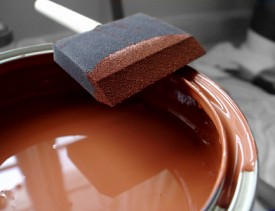Kerosene Odor in the House

Smelling any kind of gas odor in the house is scary. The most common cause of a kerosene odor in the house is the presence of petroleum products like paint or oil. When drying paint mixes with traces of natural gas in the air (from your stove, water boiler, etc.), it produces an odor similar to kerosene. It's not dangerous - just thoroughly air out your house. If the problem persists after the paint dries, call the gas company. It's most likely that once the petroleum product's fumes are gone, the odor will also dissipate.
Exposure to Actual Kerosene
Another source for an odor of kerosene is a kerosene-burning stove or lamp. According to the World Health Organization, breathing or drinking (yikes!) kerosene or kerosene-based fluids can trigger symptoms such as headache, dizziness, or vomiting. WHO states that effects are usually short-lived, however. Treatment: Air out your home and avoid inhaling or ingesting kerosene.
MedlinePlus treats kerosene exposure more seriously, claiming that in addition to the symptoms mentioned above, it may also cause such reactions as skin irritation, breathing difficulties, vision loss, and disruption of the nervous system. Their recommendation: Call the national Poison Help hotline (1-800-222-1222) or your local emergency service.
The Silent Killer
Of even greater concern than an odor of kerosene is a potentially deadly by-product from burning kerosene and other fuels. Carbon monoxide (CO) gas is called the "silent killer" because it is odorless, colorless, and non-irritating. Your best defense against CO poisoning: Hire a technician to install carbon monoxide detectors in your home if you use any type of indoor fuel-burning device, such as a kerosene heater, gas furnace, pellet stove, wood or gas fireplace, etc.
Updated February 13, 2018.
Looking for a Pro? Call us (866) 441-6648



